- Books by Charles Petzold
- Out-of-Print Books
- Books That Were Never Published
- 3D Programming for Windows
- Three-Dimensional Graphics Programming for the Windows Presentation Foundation
- by Charles Petzold
- Availability
- Table of Contents
- Source Code
- The Petzold.Media3D library
- Using the Book
- Applications and Curiosa from Chapter 9
- Русское издание Programming Windows Чарльза Петцольда
Books by Charles Petzold
New edition of the classic book completely updated for for Windows 8.
Learn how to program new Windows Store applications using the
Windows Runtime, C# and XAML
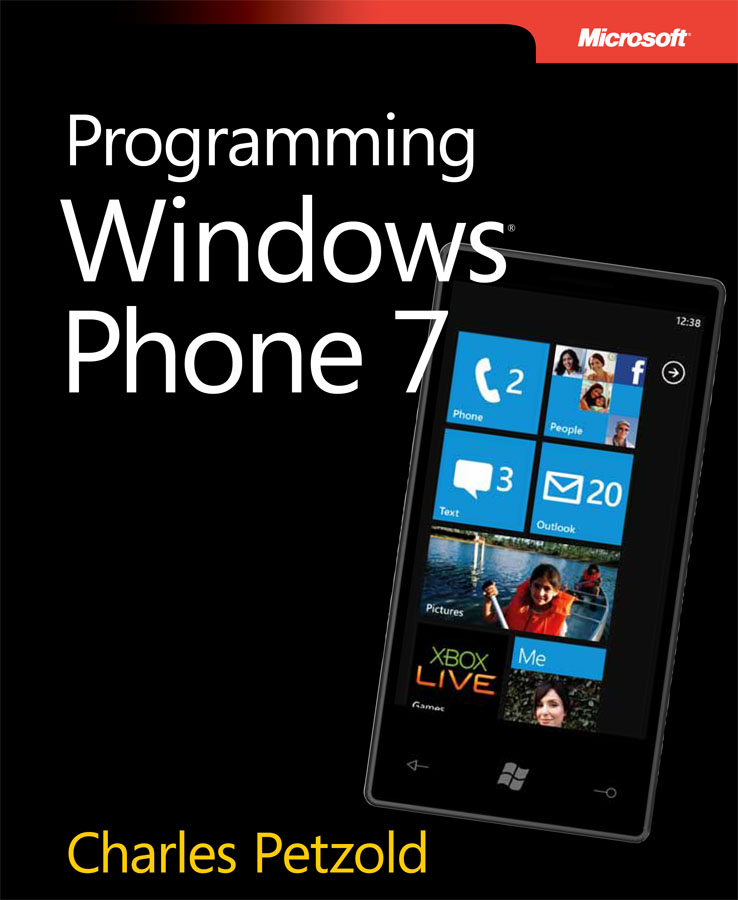
(Microsoft Press, 2010)
Free thousand-page e-book now available!

A Guided Tour through Alan Turing’s History Paper on Computability and the Turing Machine
(Wiley, 2008)
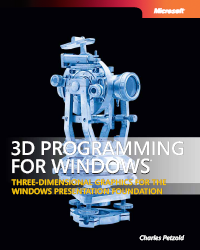
Three-Dimensional Graphics Programming for the Windows Presentation Foundation
(Microsoft Press, 2007)
An exploration and elucidation of the 3D programming facilities of the Windows Presentation Foundation.
For program source code, go to the companion content page, or download individual source code files from ftp://ftp.charlespetzold.com/3DProgWin or all source code files as 3DProgWin.zip (1.1M).
A free on-line 267-page book in PDF and XPS formats.
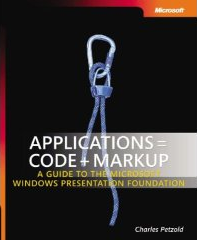
A Guide to the Microsoft Windows Presentation Foundation
(Microsoft Press, 2006)
An introduction to the Microsoft Windows Presentation Foundation (formerly code-named Avalon), including XAML.
For program source code, go to the companion content page, or download individual source code files from ftp://ftp.charlespetzold.com/AppsCodeMarkup or all source code files as AppsCodeMarkup.zip (1.65M).
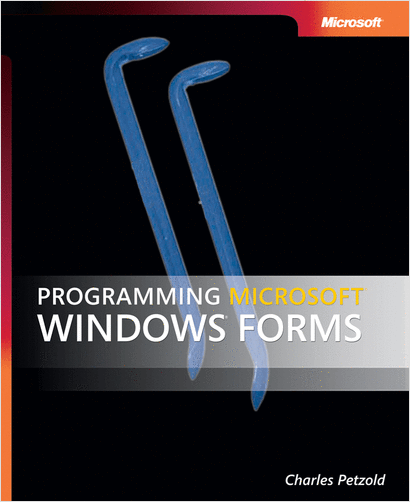
(Microsoft Press, 2005; 384 pages)
An introduction to Windows Forms programming with an emphasis on .NET 2.0.
For program source code, go to the companion content page, or download individual source code files from ftp://ftp.charlespetzold.com/ProgWinForms or all source code files as ProgWinForms.zip (422K).
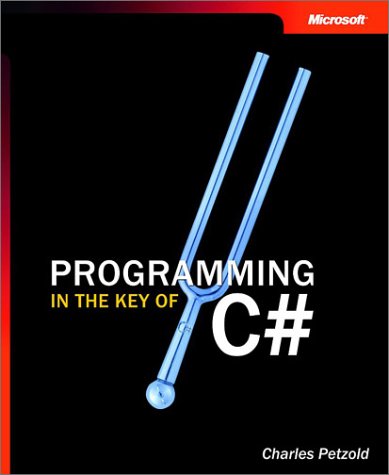
(Microsoft Press, 2003; 418 pages)
A tutorial for people wishing to learn the C# programming language. No prior programming knowledge is required.
For program source code, go to the companion content page, or download individual source code files from ftp://ftp.charlespetzold.com/ProgKeyCS or all source code files as ProgKeyCS.zip (203K).
Die Kunst zu Programmieren («The Art of Programming») is the German edition of Programming in the Key of C#. Normally titles of foreign editions are similar to the English titles, but this one had to be changed because the pun no longer worked: The key of C# in music is known as cis in German. The book is available from Amazon.de.
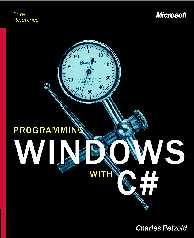
(Microsoft Press, 2001; 1290 pages)
A tutorial for programmers wishing to write applications for Windows using the C# programming language and the Windows Forms class library. Knowledge of C or C++ is required.
Download individual source code files from ftp://ftp.charlespetzold.com/ProgWinCS or all source code files as ProgWinCS.zip (684K).

(Microsoft Press, 1999; 393 pages)
A unique exploration into bits, bytes, and the inner workings of computers.
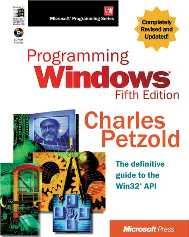
(Microsoft Press, 1998; 1479 pages)
A tutorial for programmers wishing to write applications for Windows using the C programming language and the native Win32 application programming interface (API). Programs written using this book run under every version of Windows from Windows 95 through Windows XP and beyond. Knowledge of C is required.
Download individual source code files and executables from ftp://ftp.charlespetzold.com/ProgWin5 or the complete CD as ProgWin5.zip (9.87M).
Out-of-Print Books
 | Programming Microsoft Windows with Microsoft Visual Basic .NET (Microsoft Press, 2002; 1303 pages) |
A tutorial for programmers wishing to write applications for Windows using Visual Basic .NET and the Windows Forms class library. This book is a translation of my book Programming Microsoft Windows with C# from the C# programming language to Visual Basic .NET.
For program source code, go to the Microsoft Press page and click Companion Content at the right, or download individual source code files and executables from ftp://ftp.charlespetzold.com/ProgWinVB or the complete CD as ProgWinVB.zip (709K).
The book is missing a table of colors on the inside back cover. Download it here.
If you compile programs on the command line, programs that use Visual Basic function such as Chr and ChrW require the additional Imports statement:
- Imports Microsoft.VisualBasic
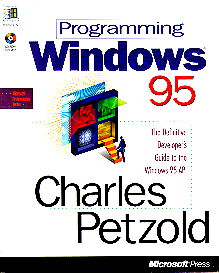
(Microsoft Press, 1996; 1100 pages)
Download individual source code files and executables from ftp://ftp.charlespetzold.com/ProgWin95 or the complete diskette as ProgWin95.zip (1.06M). Chapters 12 and 20 contain material that I do not hold the copyright on and are not included.
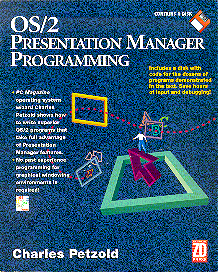
(Ziff-Davis Press, 1994; 934 pages)
This book shows C programmers how to write applications for the OS/2 2.1 Presentation Manager. The book is an update of the Microsoft Press book Programming the OS/2 Presentation Manager. The earlier book was based on the 16-bit OS/2 1.1 environment; this one focuses on the 32-bit OS/2 2.1 environment. Download individual source code file from ftp://ftp.charlespetzold.com/OS2PM2Image, or the original contents of the companion diskette from ftp://ftp.charlespetzold.com/OS2PM2.
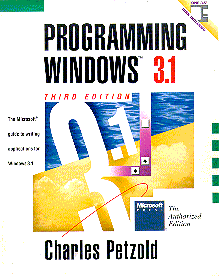
(Microsoft Press, 1992; 983 pages)
Download individual source code files and executables from ftp://ftp.charlespetzold.com/ProgWin31 or the complete diskette as ProgWin31.zip (488K).
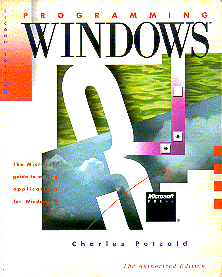
(Microsoft Press, 1990)
Download individual source code files and executables from ftp://ftp.charlespetzold.com/ProgWin30 or the complete diskette as ProgWin30.zip (401K).
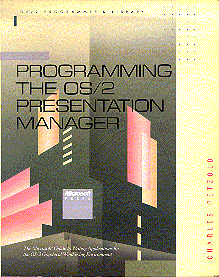
(Microsoft Press, 1989)
Download individual source code files and executables from ftp://ftp.charlespetzold.com/ProgOS2PM or the complete diskette as ProgOS2PM.zip (207K).
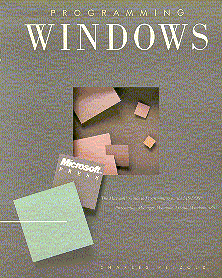
(Microsoft Press, 1988; 852 pages)
Download individual source code files and executables from ftp://ftp.charlespetzold.com/ProgWin1 or the complete diskette as ProgWin1.zip (189K).
- Advanced Book Exchange
- Alibris
- Barnes & Noble Rare, Secondhand & Out of Print
- Bibliofind.com (links to amazon.com)
- BookFinder.com (searches other new and used book sites)
- Powell’s Books (new and used books)
as well as other real and virtual used-book stores.
Books That Were Never Published
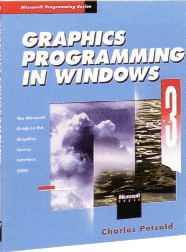 |
 | 3D Programming for Windows explores and elucidates the 3D graphics programming facilities of the Windows Presentation Foundation (WPF) under Windows Vista and the .NET Framework 3.0. ISBN: 0-7356-2394-5; Microsoft Press; July 2007; 430 pages. AvailabilityThis book is available from:
as well as many other real and virtual bookstores. Table of Contents
Source CodeFor source code to programs in the book, go to the companion content page. Information about this source code can be found in this blog entry. The Petzold.Media3D libraryThe source code for the book includes version 0.9.0.0 of the Petzold.Media3D library (including source code). Purchase of the book entitles you to royalty-free use of the library in your own programs, including commercial applications. Please do not distribute the source code or a modified version of Petzold.Media3D.dll. The latest version of the Petzold.Media3D library is version 0.9.1.0 and can be downloaded here: To be informed for future updates, subscribe to the RSS feed of my blog for notifications of new versions. Using the BookTo use the book, you will need to be running either Microsoft Windows Vista or Microsoft Windows XP with Service Pack 2 installed. You’ll also need Visual Studio 2005. Step 1. Install the .NET Framework 3.0 Redistributable Package (also known as the Runtime Components) from here. You do not need to do this step if you’re running Windows Vista because the .NET Framework 3.0 is an intrinsic part of Vista. Step 2. Install the .NET Software Development Kit from here. This is the big one! You can either download an ISO image to burn on a DVD, or run a Setup program that installs the SDK from the Web. The Web install is available here. Step 3. Install the Visual Studio extensions for .NET 3.0 from here. Step 4. The book presumes that you use the Empty Project option in Visual Studio. The .NET 3.0 extensions do not include an Empty Project option for WPF programming. To add this option, copy this WpfEmptyProject.zip file to the directory:
To create a new WPF empty project in Visual Studio, select the File | New Project item from the menu to display the New Project dialog. Select Visual C# at the left and then WPF Empty Project. Something doesn’t look right? Check the Errata List. Errors are listed both by page number and in order of the date they’re submitted to me. Something definitely isn’t right and it’s not listed? Send me an email at cp@charlespetzold.com. Applications and Curiosa from Chapter 9Chapter 9 of 3D Programming for Windows highlights several example applications that use 3D graphics. Source code for the three XBAPs (XAML Browser Applications) are available with the source code for the book. All programs require .NET 3.0. Русское издание Programming Windows Чарльза ПетцольдаРады сообщить, что вчера в продажу поступил перевод шестого издания легендарной книги Чарльза Петцольда «Programming Windows», которого пришлось ждать более 15 лет! Книга посвящена разработке приложений для Windows 8 с использованием C# и XAML. В своей новой книге Чарльз Петцольд, известный автор и один из пионеров Windows-программирования, рассказывает о разработке приложений для Windows Store с использованием C# и XAML в среде Windows Runtime. Первая часть книги «Основы» посвящена приемам, которые особенно важны для большинства рядовых программистов: сборке готовых элементов управления в приложении и их связыванию с кодом и данными. Здесь полностью объясняется весь программный код и разметка, генерируемая Visual Studio для разных шаблонов проектов. Во второй части книги «Специальные возможности» описываются низкоуровневые и нестандартные задачи — сенсорный ввод, растровая графика, расширенное форматирование текста, печать, работа с датчиками ориентации и GPS. Книга адресуется разработчикам, уверенно владеющим языком C#, которые хотят изучить API для разработки приложений для Windows 8. Небольшой экскурс в историю книги от Чарльза ПетцольдаПеред вами 6-е издание «Programming Windows» — книги, идея которой появилась в издательстве Microsoft Press осенью 1986 года. Меня привлекли к проекту, потому что в то время я писал статьи о Windows-программировании для Microsoft Systems Journal (предшественник MSDN Magazine). На обложке первого издания «Programming Windows» книга описывалась как «Руководство по программированию для MS-DOS Presentation Manager: Windows 2.0 и Windows/386». Ссылка на Presentation Manager напоминает о тех днях, когда Windows и OS/2 Presentation Manager мирно сосуществовали как разные среды для двух разных операционных систем. Первое издание «Programming Windows» (1988 год) осталось почти незамеченным сообществом программистов. Когда программисты MS-DOS постепенно осознали, что им придется изучать дивный новый мир Windows, в этом им помогали уже 2-е издание (опубликованное в 1990 году и ориентированное на Windows 3) и 3-е издание (1992 год, Windows 3.1) Когда произошел переход с 16-разрядного интерфейса Windows API на 32-разрядный, были выпущены 4-е издание «Programming Windows» (1996 год, Windows 95) и 5-е издание (1998 год, Windows 98). И хотя 5-е издание все еще остается в продаже, сообщения, которые я получаю от читателей, показывают, что книга популярна, в основном, в Индии и Китае. С годами у «Programming Windows» появилась репутация книги для программистов, которые желают работать на низком уровне, без дополнительных прослоек между их кодом и операционной системой. Но я совершенно не рассматривал ранние издания «Programming Windows» с таких позиций. В то время «работа на низком уровне» подразумевала программирование на ассемблере, запись выводимых символов прямо в память видеоадаптера и использование MS-DOS только для файлового ввода/вывода. С другой стороны, программирование для Windows подразумевало высокоуровневый язык, графику без ускорения и обращение к оборудованию только через толстую прослойку функций API и драйверов устройств. Переход с MS-DOS на Windows представлял собой намеренный отказ от скорости и эффективности ради других преимуществ. Но каких? Многие программисты-ветераны просто не понимали, зачем это нужно. Графика? Картинки? Цвета? Шрифты? Мышь? Не для этого создаются компьютеры! Если подождать достаточно долго, высокоуровневый язык становится низкоуровневым, а множественные интерфейсные прослойки словно сжимаются до API. Некоторые современные программисты C и C++ отвергают управляемые языки (такие, как C#) по соображениям эффективности, а среда Windows даже снова вернула к жизни энергичные споры на эту тему. Пожалуй, Windows 8 является самым революционным обновлением Windows с момента выхода первой версии в 1985 году, но многие опытные пользователи Windows сомневаются в разумности использования сенсорного интерфейса, адаптированного для смартфонов и планшетов, на рядовых настольных компьютерах, и ворчат, когда не могут найти знакомые функции. Наверное, единственное, что могло вернуть серию «Programming Windows» из полузабвения — это впечатляющий и неоднозначный новый пользовательский интерфейс Windows, а также API и язык программирования, приспособленный к его современным устремлениям. Эта книга посвящена исключительно программированию приложений Windows Store. О написании настольных приложений Win32 написано много других книг, включая 5-е издание «Programming Windows». Изредка в тексте будут упоминаться Win32 API и настольные приложения, но книга написана о программировании новых приложений Windows 8. Для написания этих приложений был введен новый объектно-ориентированный интерфейс программирования, называемый Windows Runtime или WinRT (не путайте с Windows RT — версией Windows 8 для процессоров ARM). В настоящее время существуют три основных варианта программирования приложений Windows 8, каждый из которых основан на определенном языке программирования и языке разметки:
Во всех трех вариантах задействуется интерфейс Windows Runtime, но он также поддерживается другим интерфейсом программирования для конкретного языка. Хотя смешанное использование нескольких языков в одном приложении невозможно, вы можете создавать библиотеки (типа Windows Runtime Component) с собственными файлами .winmd, доступные из любого языка Windows 8. После долгих размышлений (и душевных терзаний) я решил, что эта книга должна быть почти полностью посвящена C# и XAML. Меня много лет убеждали в преимуществах управляемых языков для разработки и отладки, и на мой взгляд, C# лучше всех языков подходит для Windows Runtime. Надеюсь, код C# будет достаточно понятен программистам C++, чтобы эта книга была им полезна. ОглавлениеОглавление книги можно посмотреть здесь, а отрывок прочитать здесь. |




